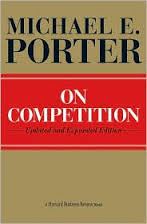Building on Porter's Five Forces: A Deeper Dive into Competitive Strategy
Michael Porter's Five Forces model is a foundational tool for understanding industry structure and competitive dynamics. By analyzing the five competitive forces, businesses can gain valuable insights into their competitive position and develop effective strategies to improve their performance.
Expanding the Framework: Beyond the Five Forces
While Porter's Five Forces provide a strong foundation, it's essential to consider additional factors and nuances to gain a more comprehensive understanding of competition:
1. Industry Dynamics and Evolution:
- Industry Life Cycle: Different stages of an industry's life cycle (emergence, growth, maturity, decline) can significantly impact competitive dynamics.
- Technological Change: Technological advancements can disrupt industries, create new opportunities, and reshape competitive landscapes.
- Regulatory Environment: Government regulations can influence market entry, pricing, and product standards, affecting industry competition.
- Global Competition: Internationalization can increase competition, as firms from different countries compete for market share.
2. Competitive Advantage and Value Creation:
- Core Competencies: Identifying and leveraging unique capabilities that differentiate a firm from its competitors.
- Value Chain Analysis: Understanding the value chain to identify opportunities for cost reduction and differentiation.
- Strategic Positioning: Choosing a strategic position within an industry, such as cost leadership, differentiation, or focus.
3. Game Theory and Competitive Strategy:
- Competitive Moves and Countermoves: Analyzing how competitors' actions can influence a firm's strategies and outcomes.
- First-Mover Advantage: The benefits of being the first to enter a market or introduce a new product.
- Cooperative Strategies: Collaborating with competitors to achieve mutual benefits, such as joint ventures or alliances.
4. Dynamic Capabilities:
- Adaptability: The ability to respond to changes in the competitive environment and adjust strategies accordingly.
- Innovation: Developing new products, services, or business models to create sustainable competitive advantage.
- Learning and Knowledge Management: Continuously acquiring and sharing knowledge to improve performance.
5. Sustainability and Corporate Social Responsibility:
- Environmental Impact: Considering the environmental consequences of business activities and adopting sustainable practices.
- Social Responsibility: Addressing social issues and ethical concerns, such as labor practices and community engagement.
- Long-Term Value Creation: Balancing short-term financial performance with long-term sustainability.
Conclusion
By incorporating these additional factors into the analysis of Porter's Five Forces, businesses can gain a more nuanced understanding of their competitive environment and develop more effective strategies. It is essential to continuously monitor industry dynamics, adapt to changing conditions, and strive for sustainable competitive advantage.
References:
- Porter, Michael E. Competitive Advantage: Creating and Sustaining Superior Performance. Free Press, 1985.
- Porter, Michael E. On Competition. Harvard Business Review Press, 1998.
- Grant, Robert M. Contemporary Strategy Analysis: Concepts, Techniques, Applications. John Wiley & Sons, 2019.



